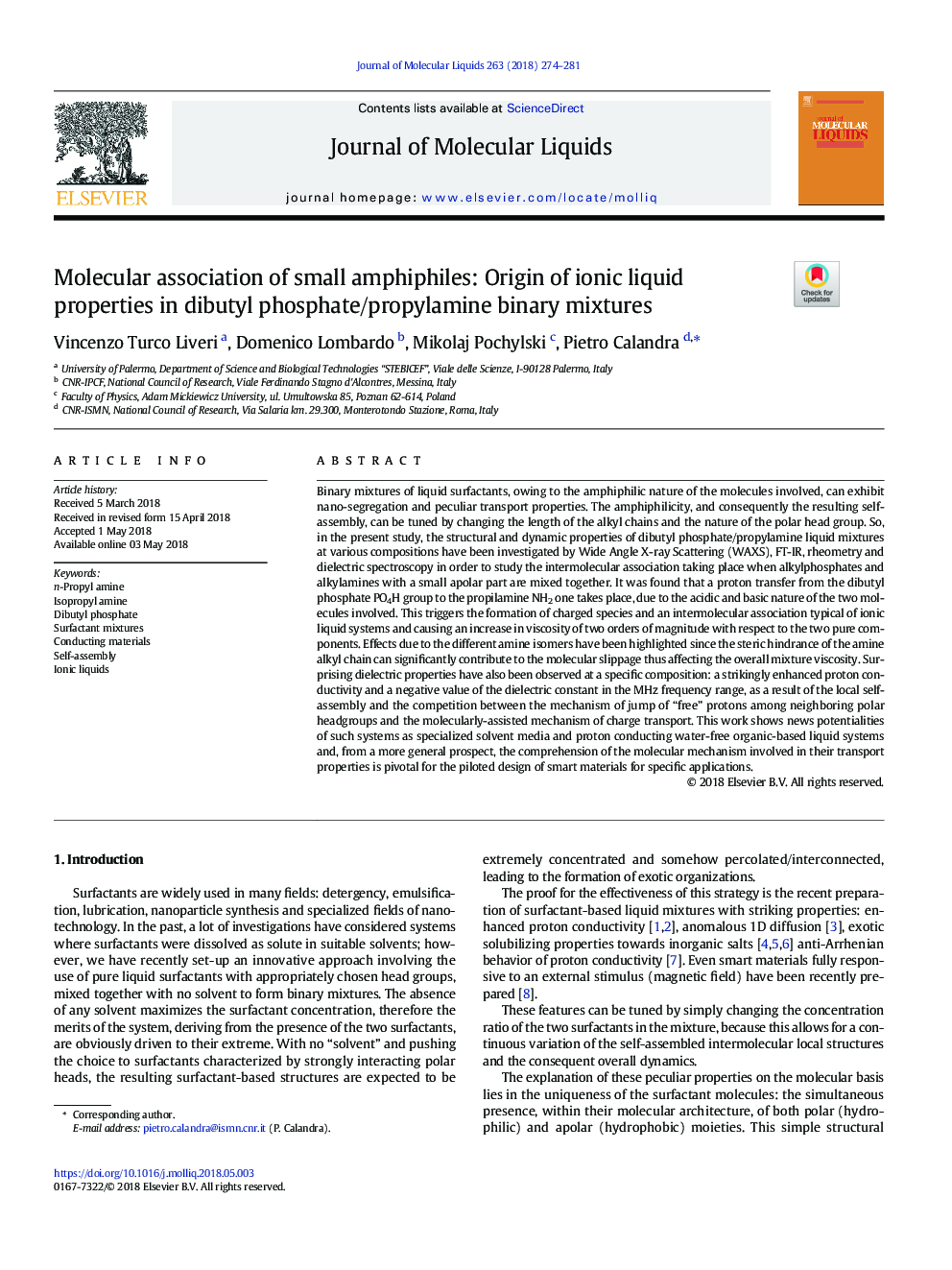| Article ID | Journal | Published Year | Pages | File Type |
|---|---|---|---|---|
| 7842214 | Journal of Molecular Liquids | 2018 | 8 Pages |
Abstract
Binary mixtures of liquid surfactants, owing to the amphiphilic nature of the molecules involved, can exhibit nano-segregation and peculiar transport properties. The amphiphilicity, and consequently the resulting self-assembly, can be tuned by changing the length of the alkyl chains and the nature of the polar head group. So, in the present study, the structural and dynamic properties of dibutyl phosphate/propylamine liquid mixtures at various compositions have been investigated by Wide Angle X-ray Scattering (WAXS), FT-IR, rheometry and dielectric spectroscopy in order to study the intermolecular association taking place when alkylphosphates and alkylamines with a small apolar part are mixed together. It was found that a proton transfer from the dibutyl phosphate PO4H group to the propilamine NH2 one takes place, due to the acidic and basic nature of the two molecules involved. This triggers the formation of charged species and an intermolecular association typical of ionic liquid systems and causing an increase in viscosity of two orders of magnitude with respect to the two pure components. Effects due to the different amine isomers have been highlighted since the steric hindrance of the amine alkyl chain can significantly contribute to the molecular slippage thus affecting the overall mixture viscosity. Surprising dielectric properties have also been observed at a specific composition: a strikingly enhanced proton conductivity and a negative value of the dielectric constant in the MHz frequency range, as a result of the local self-assembly and the competition between the mechanism of jump of “free” protons among neighboring polar headgroups and the molecularly-assisted mechanism of charge transport. This work shows news potentialities of such systems as specialized solvent media and proton conducting water-free organic-based liquid systems and, from a more general prospect, the comprehension of the molecular mechanism involved in their transport properties is pivotal for the piloted design of smart materials for specific applications.
Related Topics
Physical Sciences and Engineering
Chemistry
Physical and Theoretical Chemistry
Authors
Vincenzo Turco Liveri, Domenico Lombardo, Mikolaj Pochylski, Pietro Calandra,
